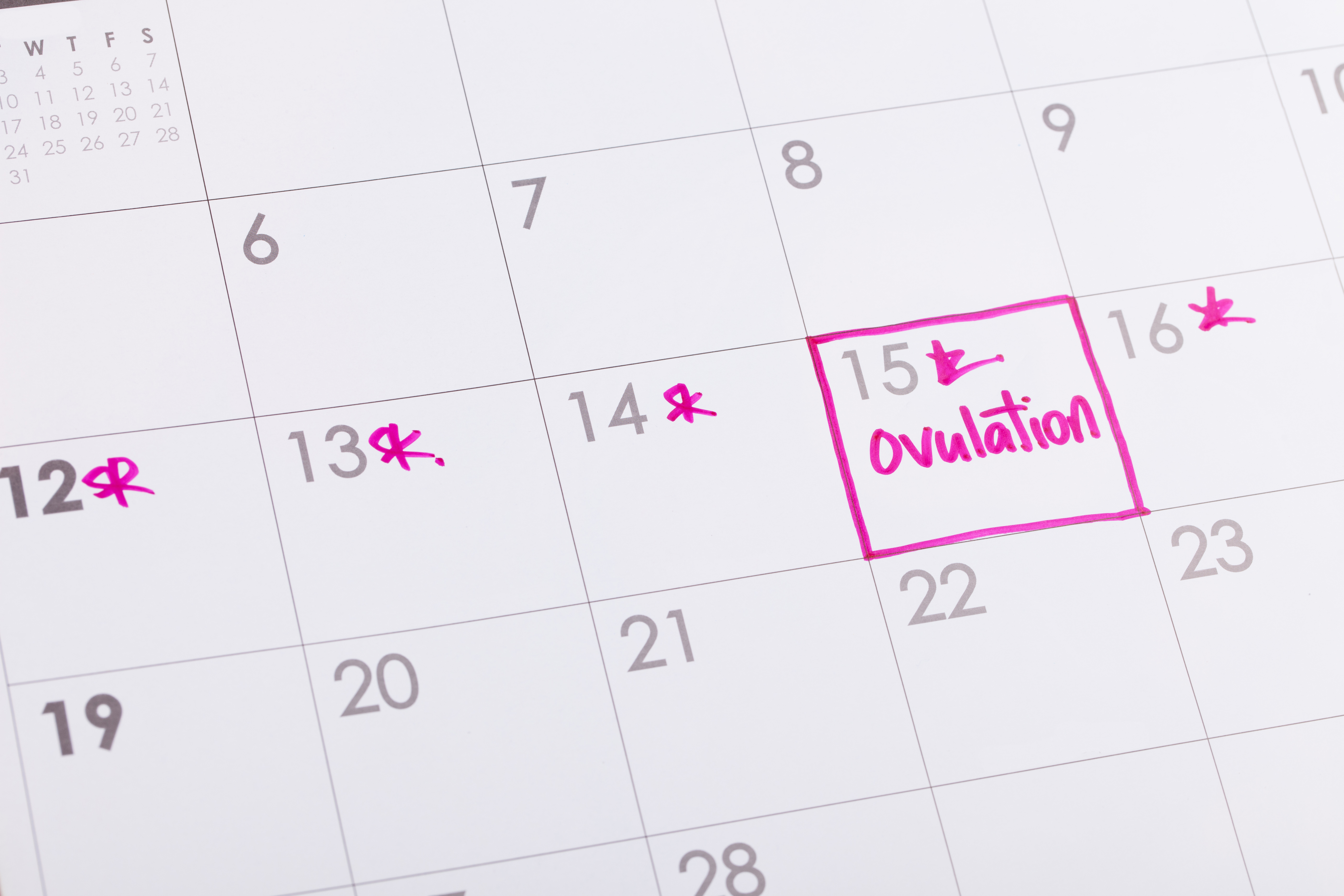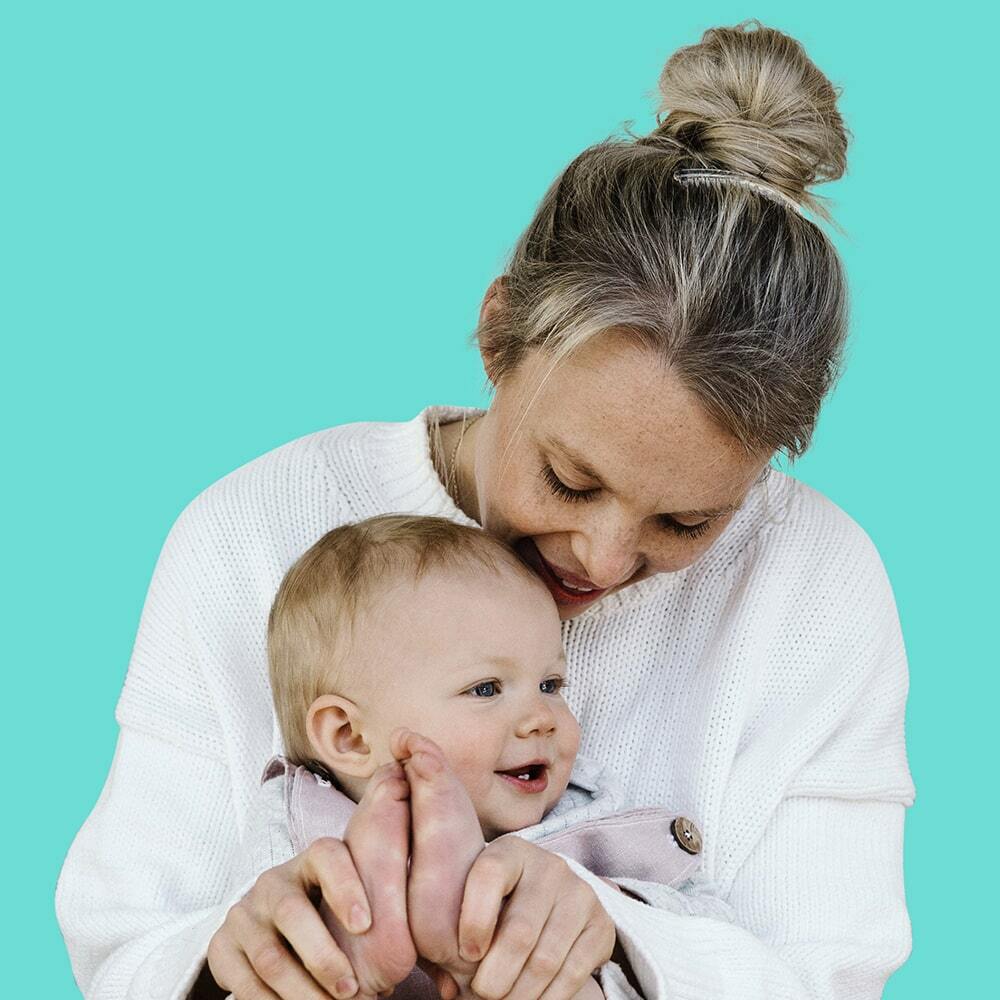What is ovulation? Everything you need to know about your ovulation cycle
11 August 2017

11 August 2017

Ovulation. It’s a word that we hear in conversations about pregnancy, fertility and conception, but what is ovulation? Why is it important? How do I track an ovulation cycle? Sometimes it’s easy enough to let our bodies do the hard work for us, but when you’re trying to conceive, ovulation is very important to understand.
What is ovulation, anyway?
Simply put, ovulation is the process of the female body releasing a mature egg from the ovaries. On average, it happens about 14 days before the start of your period, with the few days leading up to ovulation being the most fertile of your cycle.
Ovulation occurs through an intricate relationship between female hormones. Hormones send chemical messages to let different parts of the body know that it’s time to do their job. In the case of ovulation, three hormones play a role in the egg’s release: Luteinizing Hormone (LH), progesterone and oestrogen.
Hormones in play during an ovulation cycle
Oestrogen may be the most familiar out of the three and is actually the name of a group of female hormones. Oestrogen is responsible for the development of our secondary sex characteristics, like breasts, and helps us develop during puberty. It’s important when talking about ovulation as it is largely responsible for regulating the menstrual cycle.
Progesterone is another important one and plays a big role in maintaining a pregnancy. During the second half of the menstrual cycle, progesterone helps the body to prepare a place for a fertilized egg by thickening the lining of the uterus. If pregnancy occurs, progesterone is also produced in the placenta.
The Luteinizing Hormone (LH) works alongside oestrogen and progesterone to regulate the menstrual cycle but it’s pivotal role is in ovulation. Just before ovulation, LH levels surge which triggers the release of the egg.
How does ovulation work?In order to understand ovulation properly, first we need to understand the menstrual cycle. The menstrual cycle consists of four distinct cycles: menstruation, the follicular phase, ovulation, and the luteal phase.
The menstruation phase is almost certainly the most recognisable for most women and involves a 3 to 7-day period of the shedding of broken-down lining from the uterus through the vagina.
The follicular phase is where the body begins to re-develop what has been shed in the menstruation phase. During this phase the pituitary gland releases follicle-stimulating hormone (FSH), which stimulates the growth of ovarian follicles containing immature eggs. These crucial follicles produce oestrogen and progesterone and it is during this stage that the oestrogen helps begin to thicken the lining of the uterus to prepare a place for a possible fertilised egg.
The ovulation phase is where the egg is released. The releasing of the egg, which is now mature, is caused by a spike in the LH hormone. Following ovulation, an egg survives around 6 to 12 hours on average. However, if cervical mucus is present, sperm can survive for a few days and ‘wait around’ for the egg. This is how pregnancy can occur during this fertile window.
The luteal phase occurs after ovulation and before your period. This is where the follicle that was housing the mature egg produces progesterone, turning the lining of the uterus into a soft bed for a fertilised egg. The length of this phase is around 12-16 days, with short (less than 10 days) luteal phases impacting fertility and the ability for an egg to ‘stick’.
What is the difference between a period and ovulation?
Ovulation and menstruation, although connected, are two very different aspects of female reproductive health. In short, ovulation gives the female body the opportunity to conceive whereas a period is a sign that this opportunity has expired for the current cycle. If fertilization does not occur, the period is a sign that the menstrual cycle will soon begin all over again, giving the body another chance to conceive.
Can I have a vaginal bleed without ovulating?
Whilst it seems like a relatively simple question, it’s actually quite complicated. In some cases, it is possible to experience bleeding similar to a period without actually having ovulated. If a woman does not release an egg, this is what is known as an anovulatory cycle. Sometimes, the body will still ‘bleed’ even though no egg has been released, which is called anovulatory bleeding. This bleeding is not the same as a usual period as it does not involve the shedding of an unfertilized egg.
Anovulatory bleeding can happen for a couple of reasons. Firstly, if ovulation has not occurred because oestrogen levels have risen, but not surged enough to release an egg, bleeding may occur due to oestrogen withdrawal. Secondly, and more commonly, bleeding may occur due to a build-up in the lining of the uterus which cannot be sustained, leading to breakthrough bleeding.
When do you ovulate? Are there ways to track your ovulation cycle?
Yes! The easiest way is to use some simple math. First, count the days from the first day of your period up until the day before your next period. This is the length of your menstrual cycle – most are around 28 days, but it is totally normal for it to range anywhere from 24 to 34 days. From then on, you can subtract 14 days from the expected start day of your period to get an estimated ovulation day. Tracking your ovulation this way through marking a calendar is a cost-free, effective way of monitoring this phase in your cycle.
You can also tell you may be ovulating by checking your cervical mucus. Just before ovulation, your cervical mucus – the small amount of pale-coloured liquid released from your vagina – will resemble egg-whites and be slippery and clear. This is your body’s way of telling you that you are about to ovulate, as the sperm can be passed easily through the mucus at this time.
Alternatively, you can buy ovulation cycle kits from your pharmacy, which usually measure your cycle by detecting the ‘LH surge’ through your urine or saliva.
Tracking ovulation for pregnancy
Without knowing how an ovulation cycle works, many couples struggle to maximize the chance of pregnancy. This is why it is important not only to understand how it works, but to also keep in mind that each body is unique. Tracking your ovulation is vital in increasing your chances of pregnancy. In the few days leading up to ovulation, it is best to have sex at least once every two days to maximize your chances of pregnancy. However, it’s important to note that it’s perfectly normal for healthy, fertile couples to take a few cycles before they conceive, so don’t worry if you don’t conceive during your first, second or even third cycle.
Why is ovulation important?
Without understanding your cycle, ovulation and your ‘fertile window’, it can be frustrating trying for a baby with no success. The ins and outs of fertility are surely complicated, but a basic understanding of where ovulation fits in to the fertility puzzle is vital in making use of your fertile days. Female ovulation has just one aim – pregnancy – so make it your best friend!
To understand more about fertility when trying for a baby, click here. Though fertility knowledge is important, sometimes the body may need a little help. If you’re not sure, click here to find out about when it’s the right time to seek help.

Wherever you are on your journey, one of our supportive nurse enquiry team members can help you understand your options and take the next step. These conversations are free and informative.